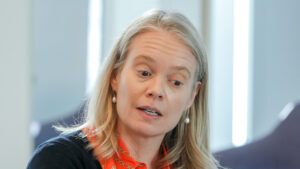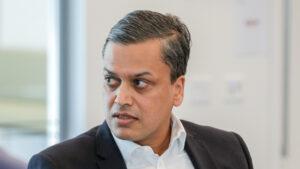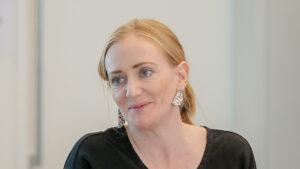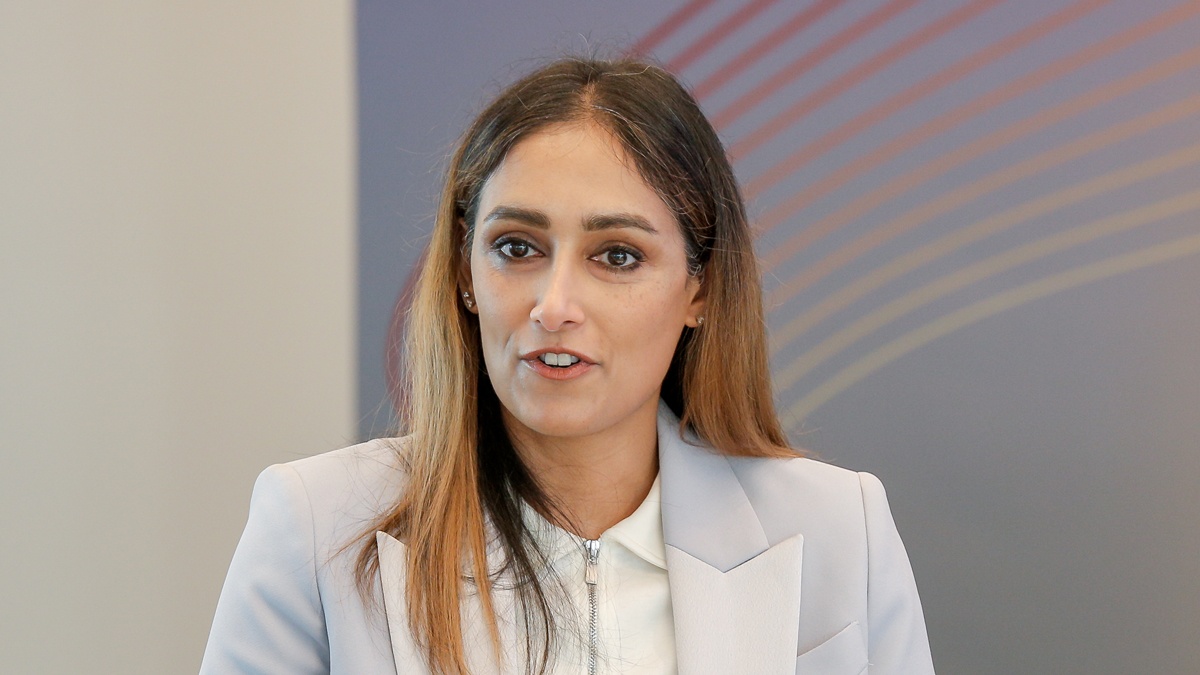As part of an ongoing series of thought leadership roundtables and webinars we have been hosting with Paul Hastings before, during and after lockdown, we were delighted to finally have an in-person debate at Paul Hastings’ London office in November 2021. We gathered together leading general counsel and Paul Hastings partners to discuss the role the legal team within corporates plays in advising the board on major risks – particularly environmental, social and governance (ESG) concerns – without stifling healthy growth.
The session examined how businesses are facing a significant number of challenges and opportunities, and the senior in-house counsel present discussed some of the specific challenges they are facing, including re-aligning to e-commerce, re-establishing supply chains, taking advantage of excess liquidity to drive strategic M&A, responding to new ESG demands from investors and stakeholders and responding to an evolving legal and regulatory landscape.
***
Derwin Jenkinson, Paul Hastings: We are here to talk about the role of general counsel and legal heads in balancing growth and risks. To some extent that dual responsibility continues as it always has, ranging across negotiation of M&A transactions and new customer or supplier agreements, to managing contractual and other legal liabilities and compliance functions. But the focus on ESG is having a significant effect on how the role is performed. The duty of directors remains to promote the success of a company for the benefit of its shareholders – and the legal function has a role in supporting that. However, increasingly it falls to legal heads to develop and implement policies that have a broader set of accountability metrics. At the same time market trends such as digitalisation and supply chain management create new challenges and opportunities for the legal function to manage legal risk and support corporate growth.
Alex Leitch, Paul Hastings: I am a litigation lawyer, so I, inevitably, tend to look at things from the perspective of risk rather than growth. From a GC perspective, one of the difficulties as regards ESG is that there are no consistent standards or metrics for developing a compliance programme and working out where traditional compliance programmes intersect with ESG, and trying to make sure that you stay on the right side of the line in relation to any regulatory or civil litigation risk.

Nina Moffatt, Paul Hastings: When I speak to lawyers, the tension that exists is how you create policies and procedures (in areas such as ESG and digitalisation) in a way that gives flexibility to the business, but also acknowledges and safeguards against related risks. This is a really interesting and challenging topic in developing legal areas such as ESG.
Mark McAteer, The In-House Lawyer: How has ESG affected your legal function in the context of supporting growth opportunities for your business?
Gaby Dosanjh-Pahil, SSE: In terms of ESG, SSE has always had a big focus on sustainability and we are leading on the renewables side of things. We had a greenprint that was very similar to the government’s green paper, which was launched after our greenprint, and we also sponsored COP26 as well. SSE is taking the renewable business very seriously and is currently developing the largest offshore wind farm in the world.

From an ESG perspective, the concern for me from a disputes and financial crime perspective is going international, which is something SSE has not previously done. We have a joint venture in Japan at the moment, and we are looking internationally on other aspects as well. We are dealing with different third parties and jurisdictions, so we are trying to get on the front foot in how we manage that escalation of risk.
Tess Bridgman, Cory: For our business, and particularly my function, there have been two major areas – one is about reporting, and the other is about growth. There has been a real increased focus on ESG. We are in the environmental management space, so a bit like SSE, we live and breathe environmental matters.
In terms of taking a step up in things like our data collection and our target setting, there has been a real pressure to improve every year. This year, we topped our sector in Global ESG Benchmark for Real Assets (GRESB), which is the infrastructure and real estate asset scoring assessment. We were also the best performing asset for our shareholders, which they were incredibly proud of.
On the growth side of the business, it has meant that ESG, and particularly carbon, is now front and centre of what we are doing. We have recently announced that we hope to develop a carbon capture facility on our existing energy from waste facility, as well as at the new energy from waste facility we’re developing right next door. Our primary purpose is not to produce power, but to manage waste. Our team is involved right at the early stages of that at the strategy level. I know that you can look at it in terms of fear and risk, but I really see it as a massive opportunity.
Alessandro Galtieri, Colt Group: There are so many standards, but they also keep changing. We were having a discussion with our auditors to the extent of which set of reporting standards to use. Certain industries will be going for certain standards, which then may end up being changed. There is still a lot of uncertainty, and an ability for people to do a certain amount of greenwashing, to the extent that they can jump from one standard to the other, ostensibly in order to choose the ‘best’ one.
Mark McAteer: How has it become the responsibility of the legal function to persuade the c suite that greenwashing is not a good idea?

Samantha Thompson, Anglo American
Tess Bridgman: It has been quite easy for me, but perhaps the size and nature of the company makes it a lot easier. I am part of the c suite, and the same eight people are involved in everything in this company. Your shareholders are a phone call away. Somewhere like SSE probably has multiple layers.
Gaby Dosanjh-Pahil: We do have lots of layers, but we have lots of engagement from the top. There is lots of communication. We are taking this extremely seriously. There is a pretty good flow from the policies at the top and how they work their way down.
Alessandro Galtieri: Legal is unique as a function. We are at the coalface because we deal with the BAU contracts that get the revenue in, but we also inform the strategy, analyse major risks and do the horizon scanning. We can see how the strategy can be translated into changes to terms and conditions, for instance, which have a green impact. We also see the other way around, where there are operational issues that might create a reputational risk, which at strategic level needs to be seen by the board, or at least by the c suite.
Daniel Gabriel, Accenture: Accenture is in a little bit of a unique position because we are selling services that are sustainable focused, and we are selling ESG services to the public. We have a focus from a customer perspective, and so our stakeholders, who are not just our customers, but also our investors and employees, are demanding that we focus on ESG. It is extremely important from a company perspective, externally facing.
I have this external internal focus. Externally, our CEO Julie Sweet does not take much convincing. She has a 2025 carbon zero, net zero focus, and we are going to get there. There are a lot of other discussions internally around compliance. Compliance is a massive issue, so I am now about to create a brand new centre of excellence around compliance within Accenture looking at all the different aspects of compliance. Suddenly, compliance is not just what we used to call it. It is bringing ESG principles into that now. Responsible business is major for us.

Nayeem Syed, London Stock Exchange Group
Gaby Dosanjh-Pahil: It has become the norm from shareholders and investors. They are demanding that, as an organisation, we take responsibility and lead on this side of things.
Daniel Gabriel: Years ago, we used to have the Global Compact, so we used to just focus on that. We used to submit RFPs, and the question would be ‘Are you complying with the Global Compact?’ You ticked it and you were a member of the Global Compact. Everyone ticked the box and said thank you, and that was it.
Alex Leitch: Gaby made the point about developing the business internationally. Daniel, you also made the point about this being a tick box exercise historically. For those businesses that have a significant international footprint or a group of international counterparties, managing your counterparty risk from an ESG issue is very important because, if that text of the new EU Directive on ESG is enacted, to illustrate the point, it imposes an element of ‘vicarious responsibility’ on a business for the actions of those in your value chain upstream and downstream.
If I were sitting in a developing country, there is a breadth of questions that could be asked. Not everybody is going to be socialised particularly in developing economic nations in the way that we are becoming socialised to these issues. How do you manage these conversations with your counterparties in such countries?
Samantha Thompson, Anglo American: We want to be on the front foot, so we are not waiting for this directive to be enacted. For example, there is work ongoing now in relation to how we get our ESG-related due diligence right in our supply chains. Our reputation matters a lot. If we come across a country or counterparty that has too much risk, it will factor into the decision-making process.
Again, in the decision-making process [it] is more and more clear that it is full impact decision-making. It is purpose driven, and so the ESG factors are taken into account in the governance. We are lucky that we have people on the ground who are familiar with difficult jurisdictions, but if it is too risky for us, we will not do it.
Gaby Dosanjh-Pahil: We are the same. We have factored that into our model as well.
Tess Bridgman: We do not do a lot of offshore or cross-border transactions, but we occasionally do in terms of procurement. It probably again goes to the size of the company and how we are able to make decisions.
For example, when developing the new Riverside Energy Park where we need more barges and containers, we are going to ask what the ESG controls are like at barge yards and if, due to capacity issues, we are going to have to revisit past decisions not to use a yard. If we have to revisit that decision, what kind of things are we going to need to put in place to get ourselves comfortable with something if we were not comfortable with it before? We have not got there yet.
Derwin Jenkinson: There is absolutely a new level of focus on procurement and supply chain management. Even in finance contracts, which are one step removed, there’s much more awareness now of the cross-default risks, such as force majeure, sanctions or anti-money laundering and bribery provisions being triggered by supply chain counterparties. It’s a significant challenge to manage when issues do arise, as has been the case during the pandemic as well as, for example, unexpected breach of modern slavery laws in long manufacturing supply chains. When it falls to a GC to determine whether to notify the lenders that a default has occurred, which may be on billions of debt, that’s a very difficult and uncomfortable judgement to have to make.
Alessandro Galtieri: The role of business has always been to make profit within the rules. We are seeing a shifting of these rules. Some of them may not be black and white, but they are also societal rules. There is a societal permission to operate that companies have, which would be very costly for companies to lose.
Nayeem Syed, London Stock Exchange Group: ESG is about sustainability across a number of dimensions. ESG fits well with a long-term approach to risk management.

Tess Bridgman, Cory
Samantha Thompson: We cannot afford to be simply reactive as businesses. We have to be proactive about some things, and that means we have to try some things, such as technology, that perhaps will not work or become the mainstream solution. It is difficult for some investors, but there is a bit of a mindset shifting in that people are realising that it is not simply about returns to shareholders only anymore.
Nayeem Syed: There is balance required between doing everything yourself and asking others to support you whether that is outsourcing or partnering with third parties. From a risk perspective, once it is outside your perimeter, you cannot fully control directly all outcomes even though you retain responsibility. You have to employ a range of mechanisms to manage your risk, sometimes contractual and sometimes relationship driven.
Nina Moffatt: In developing policies and procedures, it is important to recognise a risk-based approach. The way you implement that is to recognise that all of your suppliers or customers are not the same. The risks posed are different. You have to recognise that it is not a one-size-fits-all approach. The best compliance programmes are ones that recognise difference, and therefore implement risk scoring appropriately.
Mark McAteer: I would love to hear some thoughts from some of you about what you might perceive to be the emerging significant risks.
Derwin Jenkinson: As well as managing downside risks, how does the legal function best support growth in the current market environment? We’ve talked about the expanded role of GCs in delivering ESG policies and outcomes that secure access to capital and at a lower cost. Similarly, digitalisation, as a tool for corporate growth, brings with it rapidly developing areas of law requiring constant implementation of new policies. But what’s next in terms of the opportunities for GCs to support growth and the challenges that go with that?
Daniel Gabriel: If you are not ready or there, and if you do not have the best practices, whether from a governance perspective or whatever, you are just not going to succeed. For me, the big risk is that we are not seeing around corners. We are not ready for all of the change that is going to be coming or the reality on the ground.
Gaby Dosanjh-Pahil: For me, the main challenge is going to be making sure we are growing quite quickly, but in compliance with rules and regulations, so just being a protector of risks, and making sure policies and procedures are in place, and people are complying with those.
Tess Bridgman: One of our biggest areas of risk is the impact of carbon regulation and reaching net zero, but that is also our greatest opportunity. This is why we’re looking at a massive carbon capture project.
Nayeem Syed: The goal is to ensure stability and reliability for clients. It is therefore a lot about staying focused on resilience to keep the lights on, run global operations and deliver strong technology-driven solutions.
Samantha Thompson: The risk is climate change and the energy transition, but that is also a great opportunity. The risk if you get it wrong is that your portfolio looks wrong in 20 or 30 years’ time. The growth opportunity if you get it right is having a sustainable business, to your point, for the longer term.
Alessandro Galtieri: The risk is not preparing for what the reality will be. And it will come sooner than you think. So I think the real risk is not doing anything.
Key take outs from the discussion
- Market conditions are changing corporate behaviour and with it the remit of general counsel and their legal teams.
- GCs increasingly take a more strategic role in driving compliance with rapidly evolving ESG frameworks and in managing an explosion of supply chain and digitalisation/data risks.
- Compliance with ESG metrics is increasingly important to avoid litigation risk and to ensure cost-efficient access to capital.
- Consequently GCs are increasingly called upon to act as guardians of their organisation’s reputation, supplier and digital networks, which is ever more essential for corporate growth.
The panellists
- Tess Bridgman Cory
- Gaby Dosanjh-Pahil SSE
- Daniel Gabriel Accenture
- Alessandro Galtieri Colt Group
- Nayeem Syed London Stock Exchange Group
- Samantha Thompson Anglo American
- Derwin Jenkinson Paul Hastings
- Alex Leitch Paul Hastings
- Nina Moffatt Paul Hastings
- Mark McAteer The In-House Lawyer


